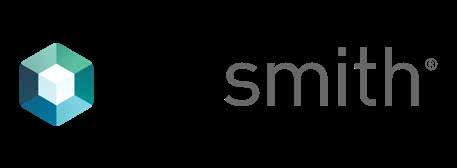
2 minute read
Paving material comparison
Paving Comparison
Make an informed decision and know what you are buying. (Contact www.bosun.co.za for a more comprehensive comparison.) Below is a summarised comparison between the most common materials used for paving in South Africa:
Advertisement
As advertised What can be created Possible outcome due to bad-quality product, bad installation or limitations of the material used Ageing
Dry Cast Concrete (Bosun)
Wet Cast Concrete
Natural Stone
Clay
Tar
Most suited for:
Residential driveways Pool surrounds Patios Internal tiling Landscaping Pathways Commercial parking Commercial driveways Public roads Industrial driveways
In one word
Advantages:
Be aware of:
Most obvious possible post-installation imperfections inherent to the specific paving material:
Most obvious possible manufacturing defects (mostly applicable when purchasing from suppliers):
Most obvious possible defects due to bad/ faulty installation (mostly applicable when installed by an unqualified installer):
Aesthetics: Wet Cast Concrete
Dry Cast Concrete ✓ ✓ ✓
Durability Design
Lowest cost of segmented materials. Dimensionally accurate and easy to install. Various shapes and sizes for a wide variety of applications. Durable. An aesthetically pleasing alternative to brick. Re-creates the look of natural stone. Less damaging to the environment than natural products. Various shapes, textures and sizes.
Obvious weathering of surface in the long term.
Colour fading. Long-term abrasion. White efflorescence. Black efflorescence.
Dimensionally inaccurate products. Pin holes on surface. Not natural and sometimes irregular colours. Colour stains, especially on larger products. Weak products.
Complete site failure or pavers breaking and spalling due to earthworks. Unlevelled or irregular surface. Cement staining when installed with cement grouting. Crooked installation lines. Failure of cement grouting.
Weathering of surface in the long term. Some shapes of pavers are not “new” and exciting.
Colour fading. Long-term abrasion. White efflorescence. Black efflorescence.
Products are dimensionally inaccurate. Uneven edges. Colour inconsistency. Not SABS-compliant in terms of strength.
Complete site failure or pavers breaking and spalling due to earthworks. Unlevelled or irregular surface. Cement staining when installed with cement grouting.
Limited larger paver options. Limited textures. Many colours available, but limited realistic, natural options. Many shapes, sizes and unlimited textures. Includes large pavers. Combinations which may be installed together. Natural colours.
Clay
✓ ✓
Natural
There is a positive, fashionable perception regarding the use of “natural” products in building and construction. Natural stone can be beautiful.
Lack of long-term consistency. Limited dimensional accuracy.
Flaking or breaking. Staining and discolouration.
Products are dimensionally inaccurate. Soft material. Stone that flakes or breaks. Colour inconsistency.
Complete site failure or pavers breaking and spalling due to earthworks. Cement staining. Installation of chipped and irregular products. Crooked installation lines. Unlevelled or irregular surface. Failure of cement grouting.
Mostly available in square, rectangular or totally irregular options. Limited textures. Natural colours.
Clean Road
Clay pavers have a natural appearance with very good colour- fastness. Durable.
Limited options in colours, shapes and sizes. Not modern and exciting.
Spalling or chipping of edges. Very susceptible to white efflorescence.
Weak product, breaking or crumbling. Chipped products. Products are dimensionally inaccurate.
Complete site failure or pavers breaking and spalling due to earthworks. Cement staining when installed with cement grouting. Crooked installation lines.
Limited shapes and textures. Mostly available as standard “bricks”. Limited colours. Low initial cost of installation. Smooth driving surface.
Aesthetically, tar is limited. Not suited to low-traffic areas or heavy vehicles turning sharply and slowly.
Cracking and potholes. Needs a lot of traffic to assist expansion and contraction.
Bad engineering or composition of material. Cracking.
Site failure due to earthworks. As asphalt paving is “installed” in-situ, there are great risks involved compared with other paving materials produced in controlled factory environments.
N/A







